Impressions about the Rubber-Clad AP Royal Oak Offshore Selfwinding 43mm
It's big, it's bold, it's also fairly "empty" but there's something truly cool to it.
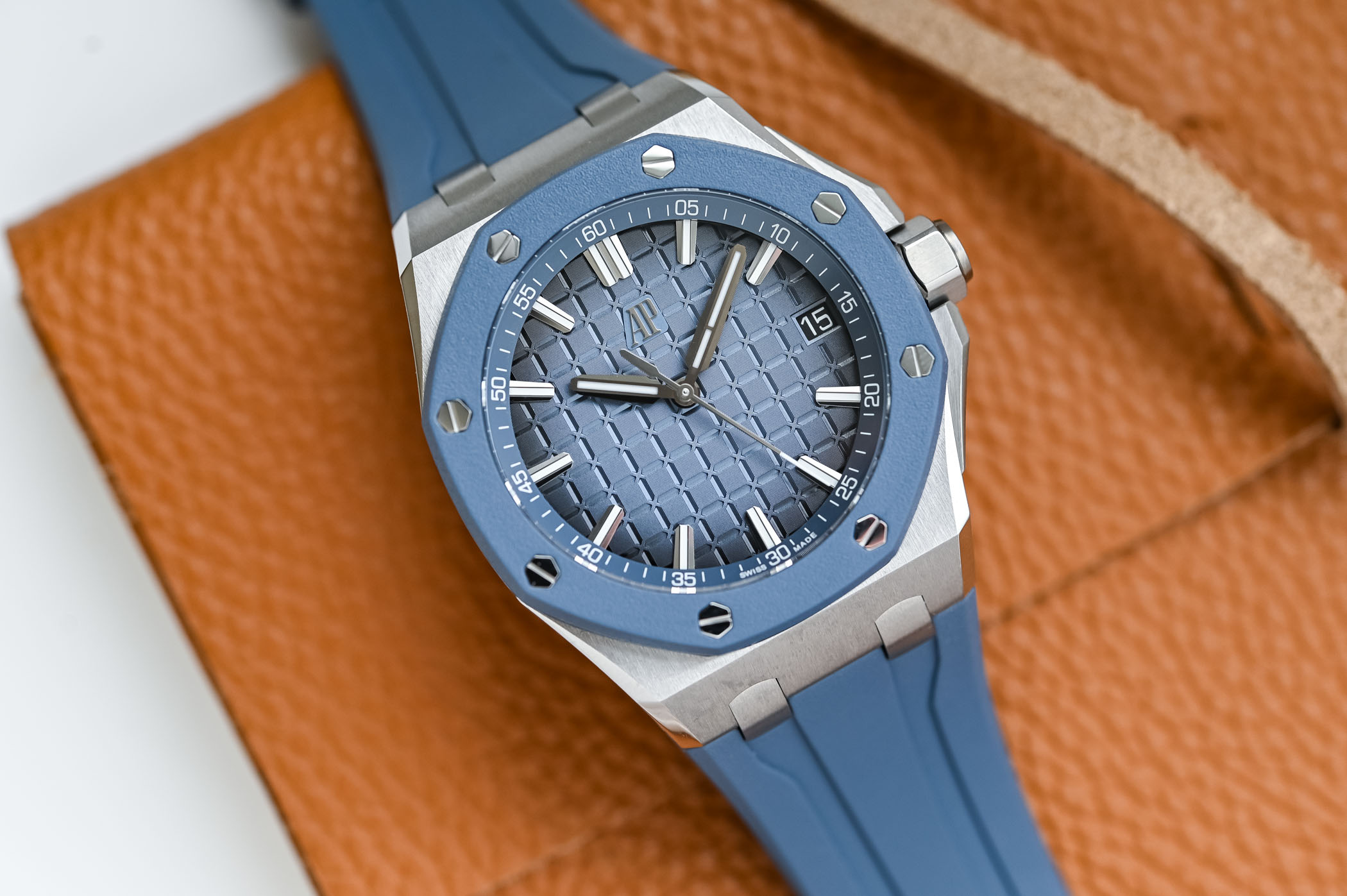
Oversized watches are a thing of the past…? Well, on paper yes. For two to three years now, many brands have been scaling down their watches. Timepieces can move back to 40mm or sometimes even less. Yet, some models are made to be big and bold. 1990s and early 2000s Panerai, the IWC Big Pilot (the real one, not the 43mm)… And then there’s the APROO, a.k.a the Audemars Piguet Royal Oak Offshore. Born big, continuously bold, highly distinctive and recognizable among thousands. And if you remove the complex display of the classic chronograph, it gives you this new reference 15605SK. Not downsized, just streamlined. But will such a large watch with a simple display work? Won’t the ROO lose some of its appeal in such a sleek form?

Born in 1993, the Royal Oak Offshore defined a new genre. Just like the classic Royal Oak broke the norm in 1972 as one of the very first luxury sports watches, making steel sexier than gold, the ROO opened the door to the high-end oversized sports watch. The original design, so-called The Beast, has long been praised for its balance and appeal. Despite being a massive watch – at least, back in the days, as now a 42mm x 15mm watch doesn’t seem that big anymore – the design was coherent and distinctive. The ROO has primarily been known as a chronograph watch and even today, a large part of the collection still relies on this function to bring life to the dial.

That being said, the Royal Oak Offshore has long been more than just a chrono. As early as 1989 with the first design ideas, designer Emmanuel Gueit proposed no-chronograph versions. In 1996-97, only three years after the initial shock that the Beast created, Audemars Piguet introduced time-and-date and calendar versions in 30mm and 38mm. But history gave the chronograph such an aura that we tend to forget that these even existed. The ROO remains, in watch enthusiasts’ minds, a watch with pushers on the side. There’s a highly interesting read on AP Chronicles about the origins and evolution of the APROO that I encourage you to look at.

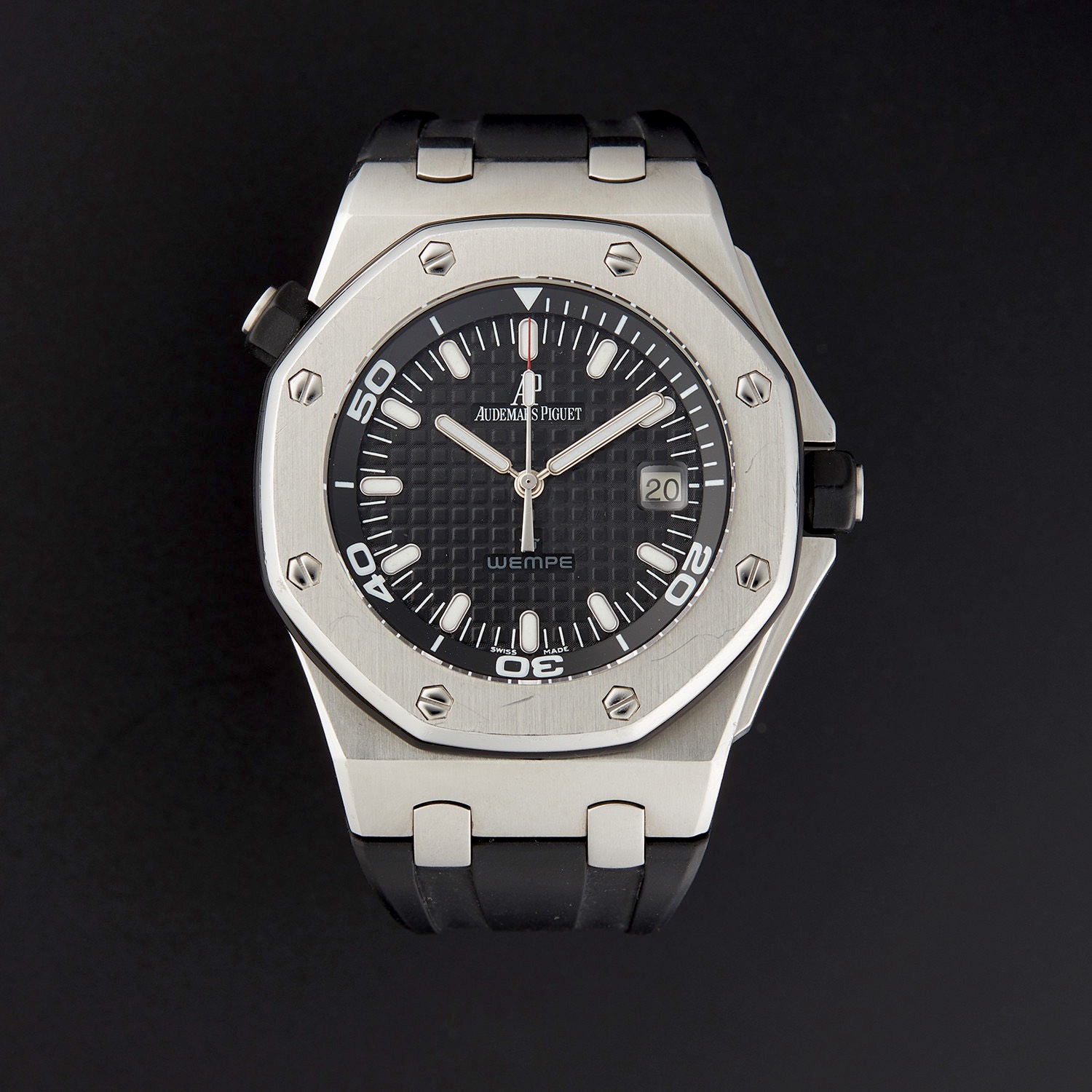
It was only in 2005 and then 2010 that the no-chrono Royal Oak Offshore gained traction, with the respective introduction of the Royal Oak Offshore Scuba and ROO Diver. Once again, there was more going on than just a time-only display here and the recently revised versions of the Royal Oak Offshore Diver still rely on an internal rotating bezel with additional crown at 10 o’clock. Time-only or time-and-date have never been really successful. So why should this new reference 15605SK be any different…? As bizarre as it will seem, it’s all about the size. For once, this new Royal Oak Offshore Selfwinding is not a smaller version of the ROO Chrono. It’s as big and bold as the rest of the collection. But does it work…?
The new APROO time-and-date 15605SK
Let’s immediately answer the question above: yes it does work! For all the wrong reasons, at least without much objectivity, this watch is far more appealing than it should be on paper. But sometimes, a design is so strong that it needs certain proportions to be appealing. Previous attempts at making a no-chrono ROO have mostly been focused on reducing the size. This new Royal Oak Offshore Selfwinding 15605SK uses the exact same diameter as the new classic chronograph version, the references 26420 – and this isn’t the only connection between these two here.
Yes, we’re looking at an oversized time-and-date watch, with a 43mm stainless steel case with a thickness of 14.4mm. And it has some weight too, as you can imagine. But just like the Big Pilot of IWC needs to be huge, the APROO have long been better with some presence on the wrist. Design-wise, no surprises here. The classic elements are all there, including the thick octagonal bezel with screws, the angular tonneau-shaped case, the brushed surfaces with polished bevels, the integrated lugs and the crown protected by lateral guards. Obviously, it was all about removing the pushers.
One of the things that I love about this new Royal Oak Offshore also brings reservations; the rubber-coated bezel. Visually, it adds contrast and colour. It also is a pretty fascinating tactile experience, with a softness and a texture that’s far different from what we’ve often seen with ceramic bezels. Finally, it adds a matte touch to this watch, bringing some contrast in how the watch reflects light. My reservations… How will it age? What happens if you have a not-so-pleasant encounter with a door frame (we’ve all been there)? Unfortunately, I can’t give you an answer.
What I can tell you is that, despite my relatively small wrists, the 43mm diameter and the fair thickness are exactly what I want this watch to be. The balance of the ROO design requires this heft and sheer size. It is how it’s balanced and coherent. It’s a strong design that works by itself, without much adornments. But it needs this size.
But let’s now talk about the dial. As said, we all have in mind the image of a Royal Oak Offshore with a chronograph display. It’s how it’s been released in 1993 and even today, most of the references are using a chronograph function. What happens when you remove this cluttered layout? With some watches, you end up with an empty dial that has no story to tell. It could have happened here too. Maybe a petite tapisserie pattern would have created this effect. But the choice of having the new Me?ga Tapisserie pattern counteracts this effect.
Contrary to the Diver models that still use a classic texture, this new Royal Oak Offshore Selfwinding 43mm 15605SK relies on a more complex pattern. I know it’s a stamped dial, but there’s a lot going on when you take the time to look at it closely. The classic squares are delimited by pronounced grooves while being interconnected by crosses in relief, and the whole dial has a fine vertical linear texture. From a distance, it remains classic Tapisserie. Come closer and you’ll see a dial that has a lot to say, without being talkative at all (there’s only an AP logo, and no literature otherwise). The lightly smoked effect reinforces the pattern and the date is, for once on such a large watch, positioned right at the edge of the dial.
Surprisingly, Audemars has decided to release only one reference, in this rather subdued grey-blue tone, which is found on the dial, there inner flange, the rubber bezel and the rubber strap. The latter is equipped with a practical quick-exchange system and AP provides this 15605SK with an additional black rubber strap – and you can also select other colours from the brand. Comfort on the wrist…? Surprisingly good considering the size/height/weight. The watch hugs the wrist nicely and, as said, its presence is somehow what gives it its character.
Inside the case there’s the calibre 4302, the new generation of automatic movements by AP, first released in Code 11:59. This modern movement, visible under the sapphire back, beats at 4Hz and stores a comfortable power reserve of 70 hours. It is nicely finished with Co?tes de Gene?ve, vertical, circular and sunray brushing, circular graining and polished chamfers, as well as a blackened 22k gold rotor. And its contemporary conception is visible in the date position.
All in all, I’m slightly puzzled by this watch. At first, when it was released, I somehow wanted to not like it, for it to be an oversized time-and-date watch. In general, I’m a strong advocate of smaller watches, and this no-complication 43mm sports watch challenges my usual concepts. Simply put, this sleek and contemporary take on the ROO, combining oversized case with complication-free dial shows how strong and characterful the original design of this collection is. Exactly like an IWC Big Pilot. Downsizing is a great move from the industry, but sometimes things are a bit more complex. This 15605SK is the exception to the rule.
Released as part of the permanent collection, the Audemars Piguet Royal Oak Offshore Selfwinding 43mm is priced at EUR 27,300 (incl. taxes) or USD 27,400 (excl. taxes). Far from accessible, yet 15k less than its equivalent chronograph version. After all, it’s an AP and these never come cheap. For more details, please visit www.audemarspiguet.com.



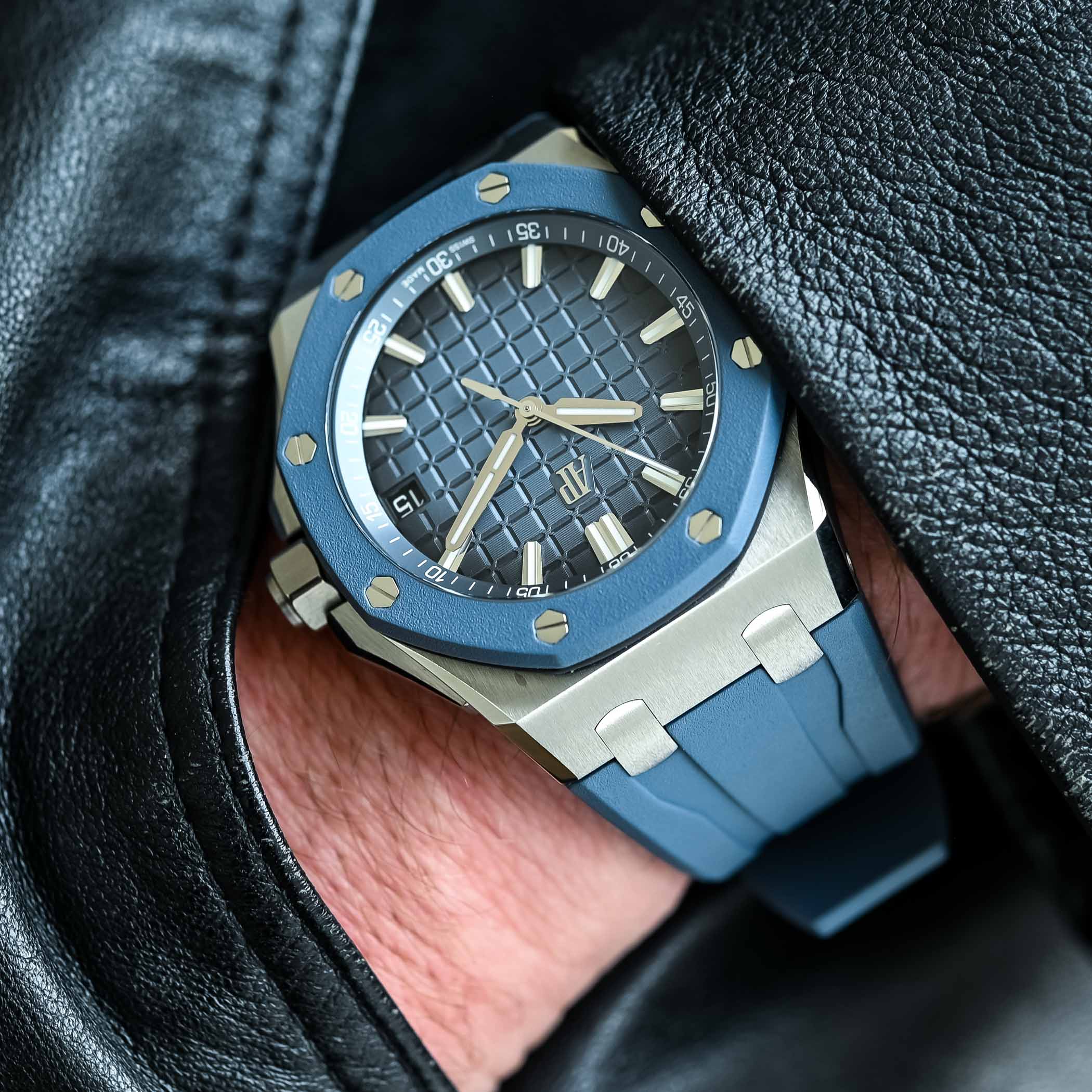
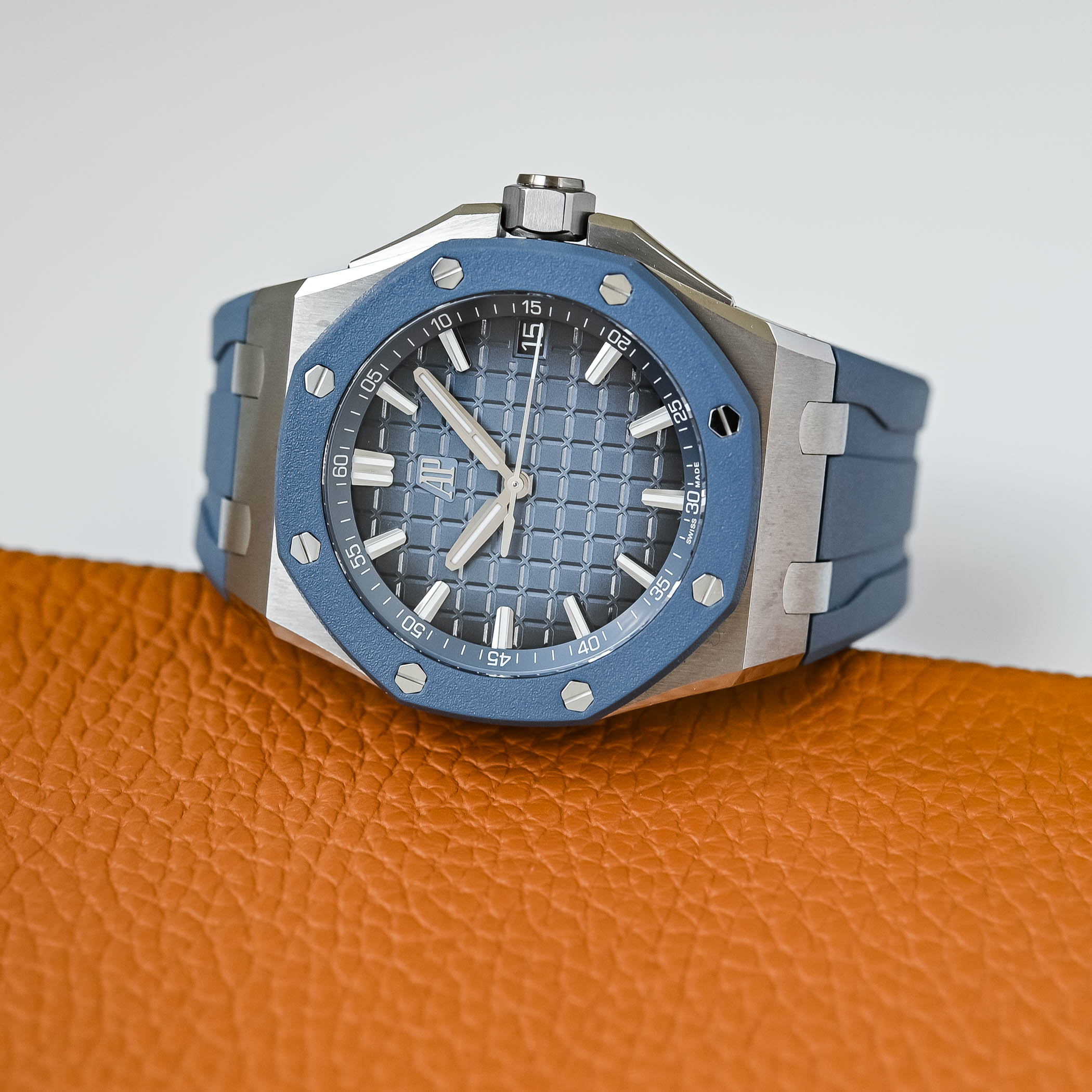



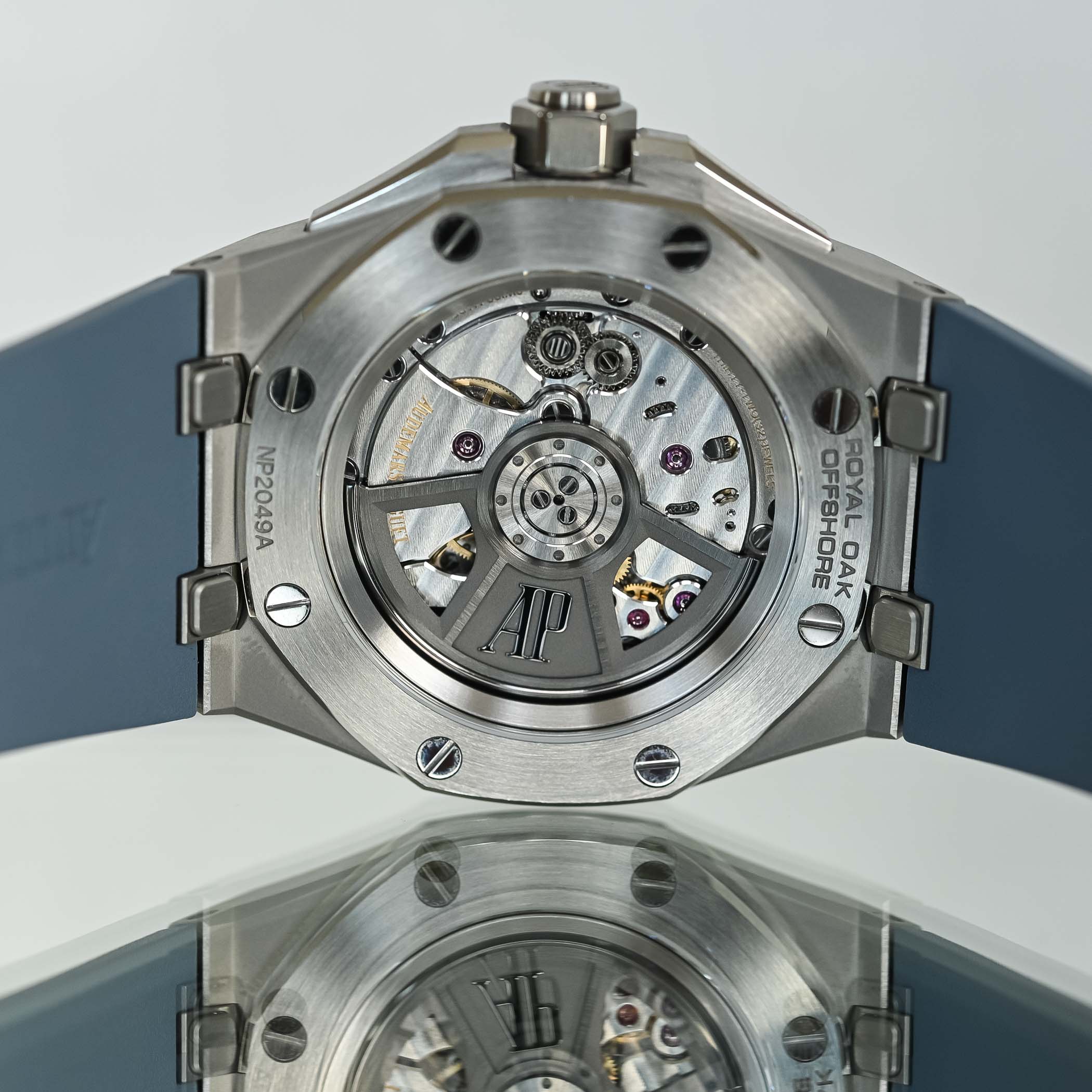
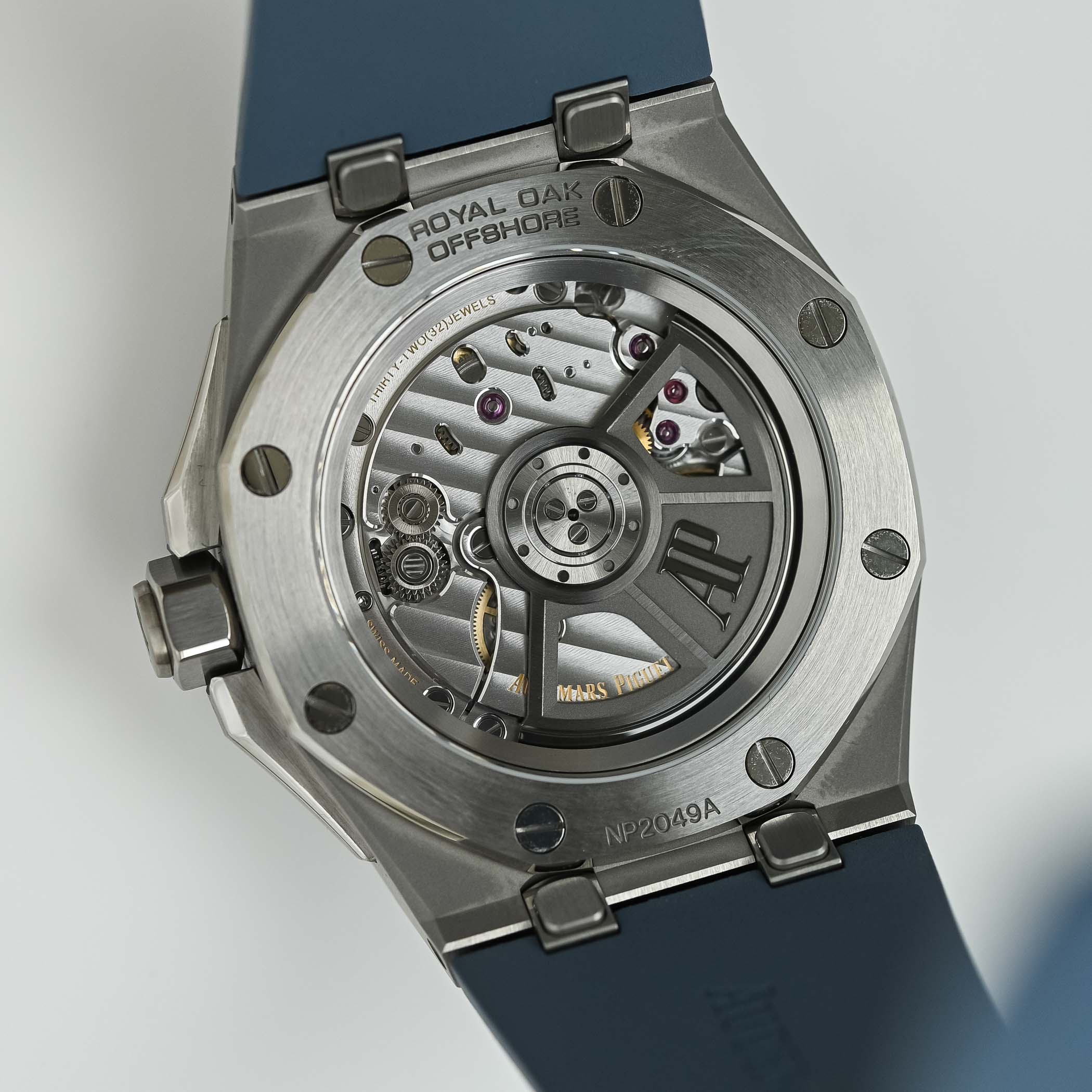




4 responses
Wow! Another Royal Oak! A new color/dial/bezel combo. Blase machine finished movement. Only $27k. Truly worthy watch…not. AP should change their name to Royal Oak Permutations Watch Company. I remember when they were a real watchmaker with interesting and beautiful models and lines…
Sadly, All I see is Hublot
Once upon a time there was a brand. Now it is trapped in a monoculture and people are bored out. Even walking trough typical watch cities, I don’t even stop at the shop window to look these Masterpieces “copy paste”.
This has been out for over 6 months, any feedback on how that rubber bezel ages and withstands wear & tear?